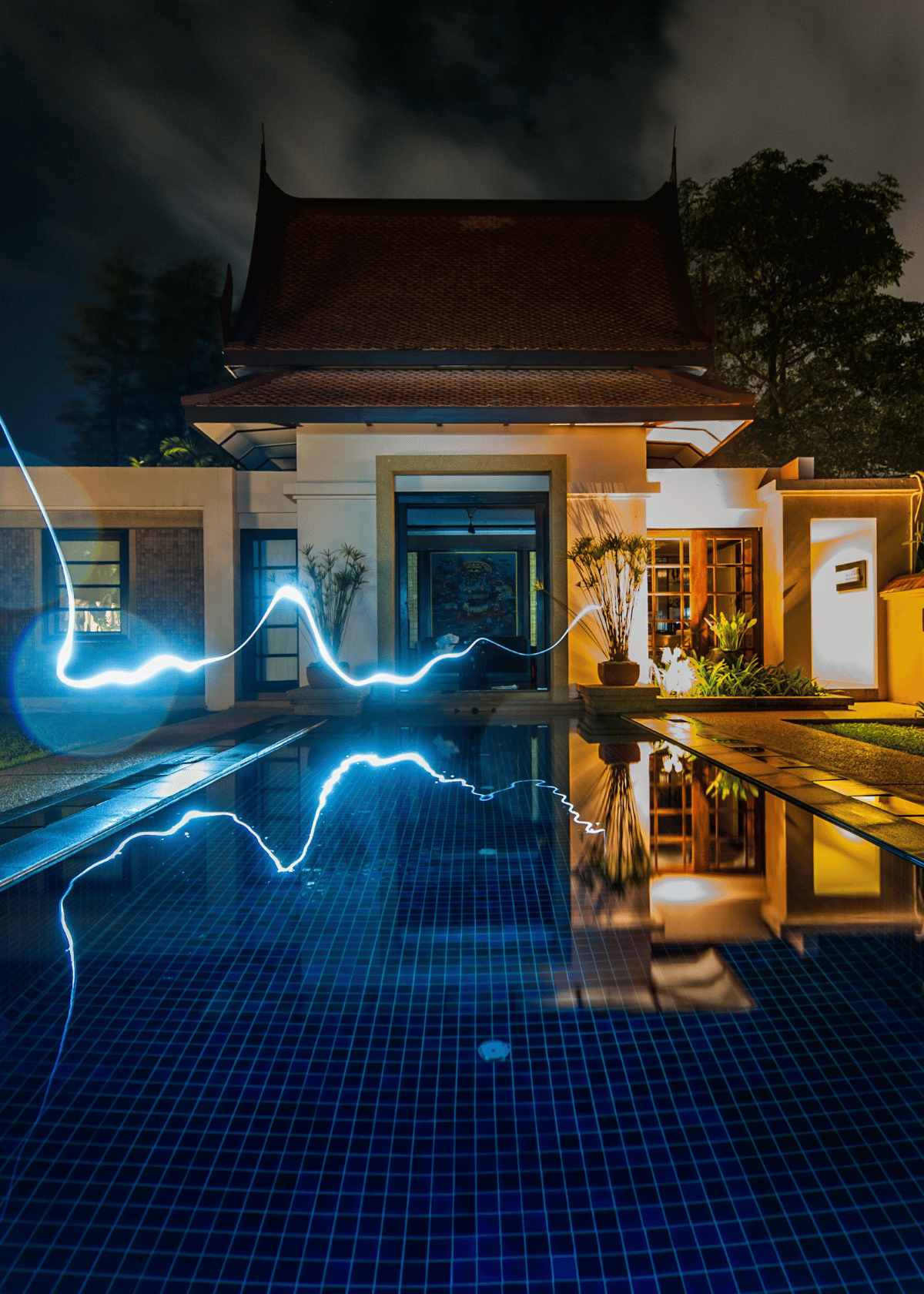Smart Home Sensors that Every Home Needs Today! 🏠

In the era of advanced homes and smart living, sensors play a pivotal role in creating a seamless and intelligent living environment. These sensors are the eyes and ears of our homes, constantly monitoring and detecting various aspects to enhance security, convenience, energy efficiency, and overall well-being. From detecting motion and monitoring temperature to tracking energy usage and providing video surveillance, there is a wide array of sensors that are revolutionizing the way we interact with our homes. In this article, we will explore 20 different types of sensors used in advanced homes, highlighting their functionalities and the benefits they bring to our everyday lives.
⇨ 20 Types of Home Sensors
➥ Motion Sensors:
Motion sensors are an essential component of advanced home automation systems. These sensors use various technologies, such as infrared or microwave, to detect movement within a designated area. When motion is detected, they can trigger a range of actions, such as turning on lights, activating alarms, or even sending notifications to homeowners' smartphones. Motion sensors enhance security by deterring intruders and providing peace of mind.
➥ Temperature Sensors:
Temperature sensors play a crucial role in maintaining optimal comfort and energy efficiency in advanced homes. These sensors monitor indoor and outdoor temperatures and provide data to the HVAC (Heating, Ventilation, and Air Conditioning) system. By continuously measuring temperature, the system can adjust heating or cooling settings accordingly, ensuring a comfortable environment while minimizing energy consumption and reducing utility costs.
➥ Humidity Sensors:
Humidity sensors are designed to measure the moisture content in the air. In advanced homes, these sensors are commonly used to control dehumidifiers and humidifiers. By monitoring humidity levels, these sensors help maintain a healthy and comfortable indoor environment. They can prevent issues like mold growth, condensation, and discomfort caused by excessively dry or humid air.
➥ Light Sensors:
Light sensors, also known as ambient light sensors, are used to detect the amount of light in a room or area. These sensors enable automatic adjustment of lighting levels based on the surrounding conditions. In advanced homes, light sensors are often integrated with smart lighting systems, allowing lights to dim or brighten according to natural light levels. This not only enhances convenience but also promotes energy efficiency by reducing unnecessary energy consumption.
➥ Smoke/CO Detectors:
Smoke and carbon monoxide (CO) detectors are vital for ensuring the safety of occupants in advanced homes. These sensors continuously monitor the air for the presence of smoke particles or elevated levels of CO gas. When smoke or CO is detected, these sensors trigger alarms, alerting residents to potential fire or gas hazards. Some advanced smoke/CO detectors can also send alerts to homeowners' smartphones, providing real-time notifications and enabling swift action to mitigate risks.
➥ Door/Window Sensors:
Door/window sensors are crucial for home security systems. These sensors detect whether doors or windows are open or closed. When a sensor is triggered, it can activate an alarm or send a notification to homeowners' smartphones, providing real-time information about potential breaches. Door/window sensors enhance security by alerting residents to unauthorized access attempts and allowing them to take immediate action.
➥ Presence Sensors:
Presence sensors are used to detect the presence or absence of individuals within a specific area. These sensors can be employed to automate various systems in advanced homes, such as turning lights on or off, adjusting temperature settings, or activating security measures. By detecting occupancy, presence sensors contribute to energy savings by ensuring that systems are only active when needed.
➥ Water Sensors:
Water sensors are essential for preventing water damage in advanced homes. These sensors are typically placed near areas prone to leaks, such as under sinks or near water heaters. When water is detected, the sensors send alerts to homeowners, allowing them to address plumbing issues promptly. Water sensors help mitigate potential damage and minimize repair costs by providing early warnings of leaks or flooding.
➥ Touch Sensors:
Touch sensors enable touchless controls of appliances, locks, and other devices in advanced homes. These sensors use capacitive or infrared technology to detect proximity or touch gestures. By eliminating the need for physical contact, touch sensors enhance convenience, hygiene, and accessibility. They are commonly used in touchless faucets, smart locks, and home automation systems, providing a seamless and intuitive user experience.
➥ Infrared Sensors:
Infrared sensors, also known as passive infrared (PIR) sensors, are used to detect motion behind walls or within a designated area. These sensors work by detecting changes in infrared radiation caused by moving objects. In advanced homes, infrared sensors are often integrated with occupancy-based lighting systems. When motion is detected, the sensors trigger lights to turn on or off automatically, promoting energy efficiency and convenience.
➥ Air Quality Sensors:
Air quality sensors monitor indoor air quality levels in advanced homes. These sensors measure parameters such as particulate matter, volatile organic compounds (VOCs), and carbon dioxide (CO2) levels. By continuously monitoring air quality, these sensors enable ventilation systems to adjust airflow rates accordingly, ensuring a healthy and comfortable living environment. Air quality sensors contribute to improved respiratory health and overall well-being.
➥ Noise Sensors:
Noise sensors are designed to detect sound levels within a home environment. These sensors can monitor appliances, detect intruders, or provide insights into noise pollution levels. By analyzing sound patterns, noise sensors can trigger appropriate actions, such as adjusting volume levels, sending notifications, or activating security measures. Noise sensors enhance comfort, security, and peace of mind in advanced homes.
➥ Biometric Sensors:
Biometric sensors utilize unique biological characteristics, such as fingerprints, facial features, or iris patterns, for identification and security purposes. In advanced homes, biometric sensors are commonly used for access control, allowing homeowners to unlock doors or disarm security systems using their biometric data. These sensors provide a high level of security, as biometric traits are difficult to replicate or forge.
➥ Radon Sensors:
Radon sensors are essential for monitoring indoor air safety in advanced homes. Radon is a radioactive gas that can seep into buildings from the ground, posing health risks when present in high concentrations. Radon sensors continuously measure radon gas levels and provide alerts if levels exceed safe thresholds. By detecting radon, these sensors enable homeowners to take necessary measures to mitigate the risks and ensure a healthy living environment.
➥ Soil Moisture Sensors:
Soil moisture sensors are used in advanced homes to automate plant watering systems. These sensors measure the moisture content in the soil and provide data to irrigation systems. By analyzing soil moisture levels, these sensors enable precise and efficient watering, ensuring that plants receive adequate hydration without wasteful overwatering. Soil moisture sensors contribute to the health and vitality of indoor and outdoor plants.
➥ Tilt Sensors:
Tilt sensors are utilized in advanced homes to detect the position of doors or windows, specifically if they are open or ajar. These sensors can provide valuable information for security purposes, alerting homeowners if a door or window has been left open or tampered with. Tilt sensors are often integrated into home security systems, allowing residents to take immediate action to secure their homes and prevent unauthorized access.
➥ GPS Sensors:
GPS sensors play a crucial role in advanced homes, particularly in locating personal items or pets indoors. These sensors are commonly used in conjunction with smart tags or wearable devices. By utilizing satellite positioning systems, GPS sensors can accurately track the location of tagged items or pets within the home. This technology provides peace of mind, allowing homeowners to quickly locate misplaced items or monitor the whereabouts of their pets.
➥ Gas Sensors:
Gas sensors are essential for detecting the presence of combustible, toxic, or inflammable gases in advanced homes. These sensors continuously monitor the air quality and can detect the presence of gases such as carbon monoxide, natural gas, or propane. When gas levels exceed safe thresholds, gas sensors trigger alarms or send notifications to homeowners, enabling them to take immediate action to mitigate potential hazards and ensure the safety of occupants.
➥ Power Monitoring Sensors:
Power monitoring sensors are designed to track the energy usage of individual appliances in advanced homes. These sensors provide real-time data on energy consumption, allowing homeowners to monitor and optimize their energy usage. By identifying energy-intensive appliances or detecting abnormal energy patterns, power monitoring sensors enable homeowners to make informed decisions about energy conservation, reduce utility costs, and promote sustainable living.
➥ Camera Sensors:
Camera sensors are widely used in advanced homes to provide video surveillance for safety and monitoring purposes, especially when homeowners are away. These sensors capture high-resolution video footage of designated areas, such as entrances, hallways, or outdoor spaces. Integrated with smart home security systems, camera sensors enable homeowners to remotely monitor their homes in real-time through mobile devices or computers. Camera sensors enhance security, deter potential intruders, and provide valuable evidence in the event of incidents or emergencies.
Conclusion:
As we conclude our exploration of the 20 different types of sensors used in advanced homes, it becomes evident that these sensors are the backbone of modern home automation systems. They enable us to create personalized and intelligent living spaces that prioritize security, convenience, energy efficiency, and safety. From motion sensors that activate lights and alarms to temperature sensors that optimize HVAC systems, and from gas sensors that detect potential hazards to camera sensors that provide video surveillance, these sensors have transformed our homes into smart and responsive environments. With continuous advancements in sensor technology, we can expect even more innovative and sophisticated sensors to emerge, further enhancing our living experiences and making our homes truly intelligent and interconnected.





